First Martian
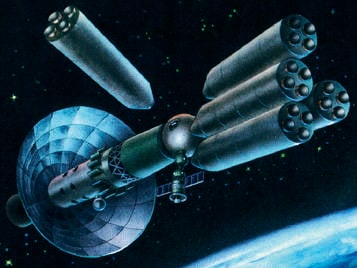 Gleb Yurievich Maximov is the talented and most underrated space designer of the USSR. It was he who created the first artificial satellite of the Earth and many other spacecraft, including the top-secret interplanetary spacecraft, which was supposed to launch 8 on June 1971 of the year to Mars.
Gleb Yurievich Maximov is the talented and most underrated space designer of the USSR. It was he who created the first artificial satellite of the Earth and many other spacecraft, including the top-secret interplanetary spacecraft, which was supposed to launch 8 on June 1971 of the year to Mars.SON ENEMY
Maximov became an eminent scientist not because of, but in spite of, the Soviet power. All the details of his biography suggest a chain of incredible coincidences that allowed him to take place as the creator of space technology. My grandfather, Nikolai Maximov, a descendant of the Horde khan Maksud, who converted to Orthodoxy and received a conformable surname at baptism, Maksimov, was the founder of the first book publishing house in Ufa, the owner of the first book printing house. That is, by Soviet standards, the exploiter of the working people. His father, Yuri Maksimov, was a repressed leftist SR who had spent his time in a gulag from 30 to Khrushchev’s amnesty for 1956. Nevertheless, the son of an “enemy of the people” managed to graduate from the Moscow Aviation Institute, in 1949 he got a job at the Scientific Research Institute No. 4 of the USSR Ministry of Defense, located in Bolshevo, Moscow Region. There he calculated the ballistic characteristics of the flight path of rockets with a limited range (for example, from Moscow to London).
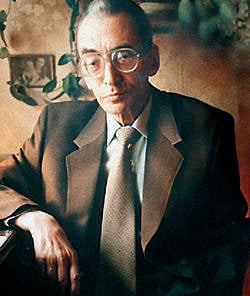 His space odyssey began after a report from Academician Blagonravov, where Maximov suggested docking the rockets together (that is, making the rockets multi-stage). Thus, the flight range increased, and a multistage rocket could already be launched into space. Maximov's report came to listen to Sergei Korolev, who was unsuccessfully tormented then with a duplicate of the captured V-2 (P-1 rocket). And soon Maximov received an appointment to the royal OKB-1 (the current RSC Energia), where practical work on the exploration of outer space is taking place.
His space odyssey began after a report from Academician Blagonravov, where Maximov suggested docking the rockets together (that is, making the rockets multi-stage). Thus, the flight range increased, and a multistage rocket could already be launched into space. Maximov's report came to listen to Sergei Korolev, who was unsuccessfully tormented then with a duplicate of the captured V-2 (P-1 rocket). And soon Maximov received an appointment to the royal OKB-1 (the current RSC Energia), where practical work on the exploration of outer space is taking place.ALGAE FOR COMFORT
In 1956, Maximov designs the first artificial satellite of the Earth - the most famous ball with antennas, whose name is included in all languages of the world. Then he switches to projects of interplanetary expeditions. In the direction of the Moon, Mars and Venus, the first automatons with a short autograph “G. Max "on the body:" Moon "," Mars-1 "," Venus-1 "," Venus-2, "Venus-3". The Maximov apparatus is the first to photograph the reverse side of the moon. But the designer at that time already dreams of manned interplanetary flights.
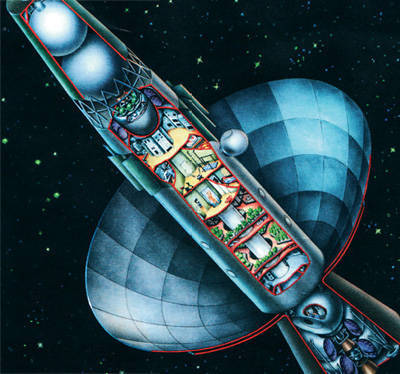
And in 1959, his group began work on the most ambitious project of the twentieth century - the project of a manned mission to Mars. A so-called heavy interplanetary ship (TMK) with a nuclear engine, with protection from solar radiation, with landing modules, with greenhouses, providing an autonomous flight for many years, is being developed. “At that time it was not yet known that a person can live in a weightless environment,” recalls Oleg Tikhonov, a participant in that project. - Therefore, even artificial gravity was envisaged. The ship rotates around its axis and an artificial force of gravity arises. "
The Martian ship was to be built in orbit, and to launch it, a special rocket was created - the “seven” (H-7). An intermediate option was also envisaged: a flight over Mars and a return along an elongated elliptical orbit to Earth. “In the end, they decided to do without greenhouses and sections with rabbits,” says Nikolay Protasov, Maximov’s associate, who was involved in the life support systems of the interplanetary ship. - Left only chlorella algae that produce oxygen, and even then as an element of psychological comfort. After all, a flight to other planets is different from a flight in Earth orbit. Now astronauts see the Earth, the Moon, feel that we are near. And flights to Mars, Venus is quite another. ”
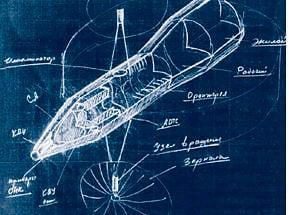 PARTY SENT IN SPACE
PARTY SENT IN SPACETo flight to Mars prepared very seriously. In accordance with the resolution of the Central Committee of the CPSU and the Council of Ministers of the USSR No. 715 — 296 of 23 of June 1960, the launch date was set to 8 of June of 1971 of the year. The day was taken not from the ceiling, but from the calculations of astronomers: it was then that the most favorable period of the so-called great opposition of the planets was when the distance between the Earth and Mars was reduced to a minimum. A triumphant return to Earth was planned for June 10 1974.
The current talk about the clumsiness of the Soviet economy is somewhat exaggerated. There was everything inherent in the economies of developed countries, down to the elements of competition: several institutes simultaneously work on heavy missiles simultaneously. In addition to the Queen, rockets are created by the teams of Yangel and Chelomey. And on the project itself, in parallel with Maximov, Konstantin Feoktistov’s group begins to work. Then the achievements of these groups are pressed in the final version. Gleb Maximov becomes the head of a large well-coordinated team, the famous 9-th department.
By the beginning of 1964, OKB-1 had already prepared projects for six docking modules for creating TMK (although “in metal” these modules appeared only after 25 years, when creating orbital stations of the Salyut type). A mock-up of an interplanetary spacecraft was also built - a ground module where the testers lived in conditions of a long stay in an enclosed space.
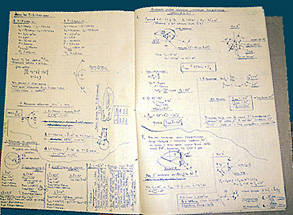 THE MAIN THING IS THE MOON
THE MAIN THING IS THE MOONHowever, Mars was soon forgotten. And the Moon was to blame for this, more precisely, the moon race that unfolded between the Soviet Union and the United States. At this time, the Americans launch their heavy rocket ("Saturn-1В") with a mock-up of the lunar "Apollo". In accordance with Khrushchev's imperative, “Overtake and overtake America!”, All forces were immediately switched to moon exploration projects, and the Martian project was pushed backward into the background. But after Khrushchev's displacement, they began to look at the projects of the Martian expeditions as if they were maize behind the Arctic Circle. The era of "star wars" is approaching, the politburo (with the filing of Ustinov) focuses on orbital stations.
However, the president of the USSR Academy of Sciences, Mstislav Keldysh, in 1969, offered to return to the Martian projects of Gleb Maximov again. But did not receive support. Gradually, all the drawings and calculations for the development of Mars were destroyed, even the personal diaries of the designer and documents classified as “secret” burned down.
“What about the space ship?” Also passed for scrap? - I ask Protasov.
- Not really, one module is still alive - now it is a ground-based experimental complex at the Institute of Biomedical Problems. This is Maximov's ship.
In contrast to Korolev, who gained, though posthumously, world fame, few people know about Gleb Maksimov even now. Only once did the designer receive a few lines in the magazine.News cosmonautics ":" 26 August 2001, died Gleb Y. Maksimov. For more than half a century he worked actively, enthusiastically and with great creative dedication in the rocket and space industry, first, from 1949, in the research institute-4 in the M group of K.Tikhonravov, on theoretical problems of launching artificial satellites of the Earth. Then, from 1956, in OKB-1 S. Korolev, where he headed the project sector and the department that developed the first automatic interplanetary stations for studying the Moon, Venus, Mars and interplanetary ships, for which he was awarded the Lenin Prize. ”
- Iskander Kuzeev
- http://www.ogoniok.com"rel =" nofollow ">http://www.ogoniok.com
Information